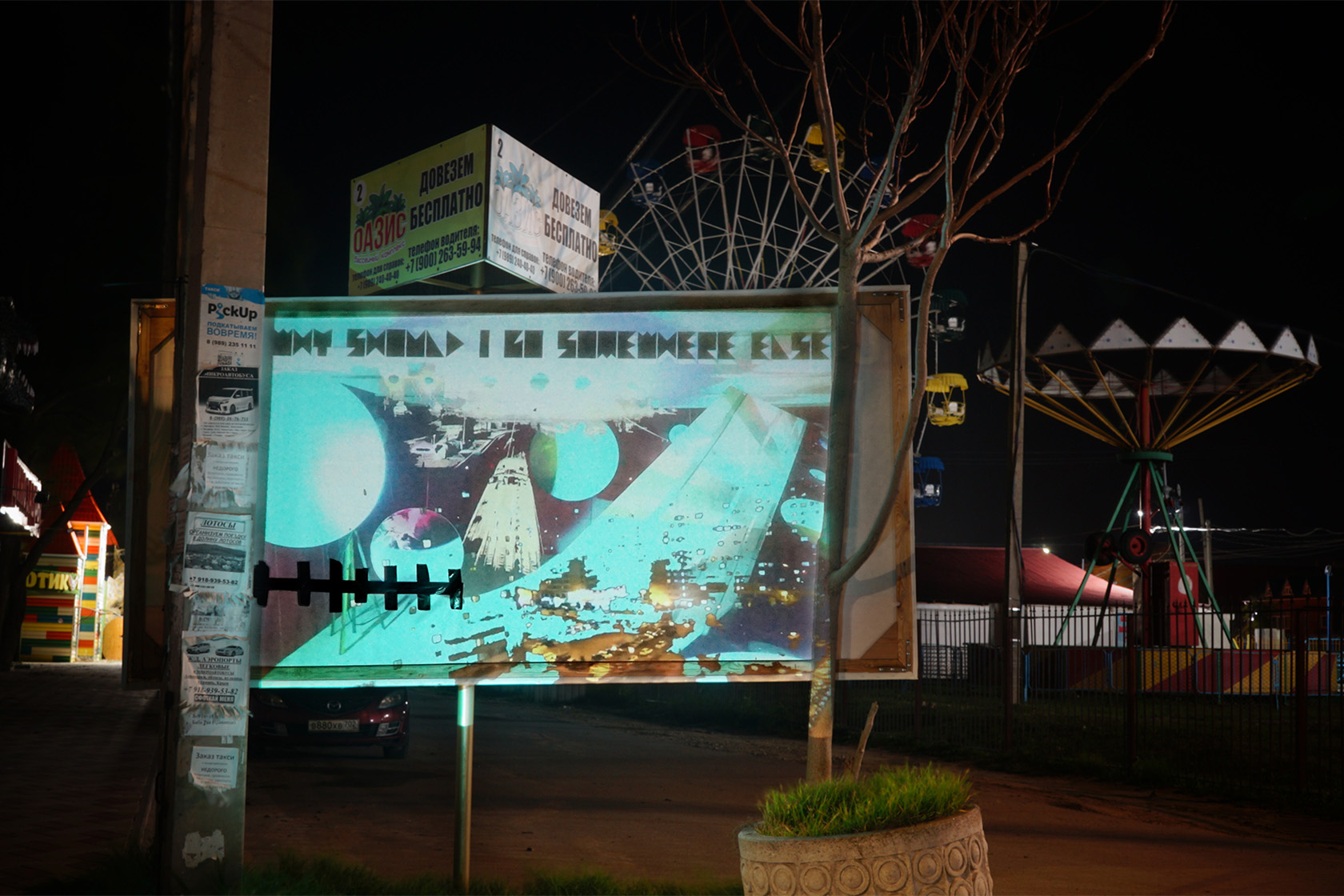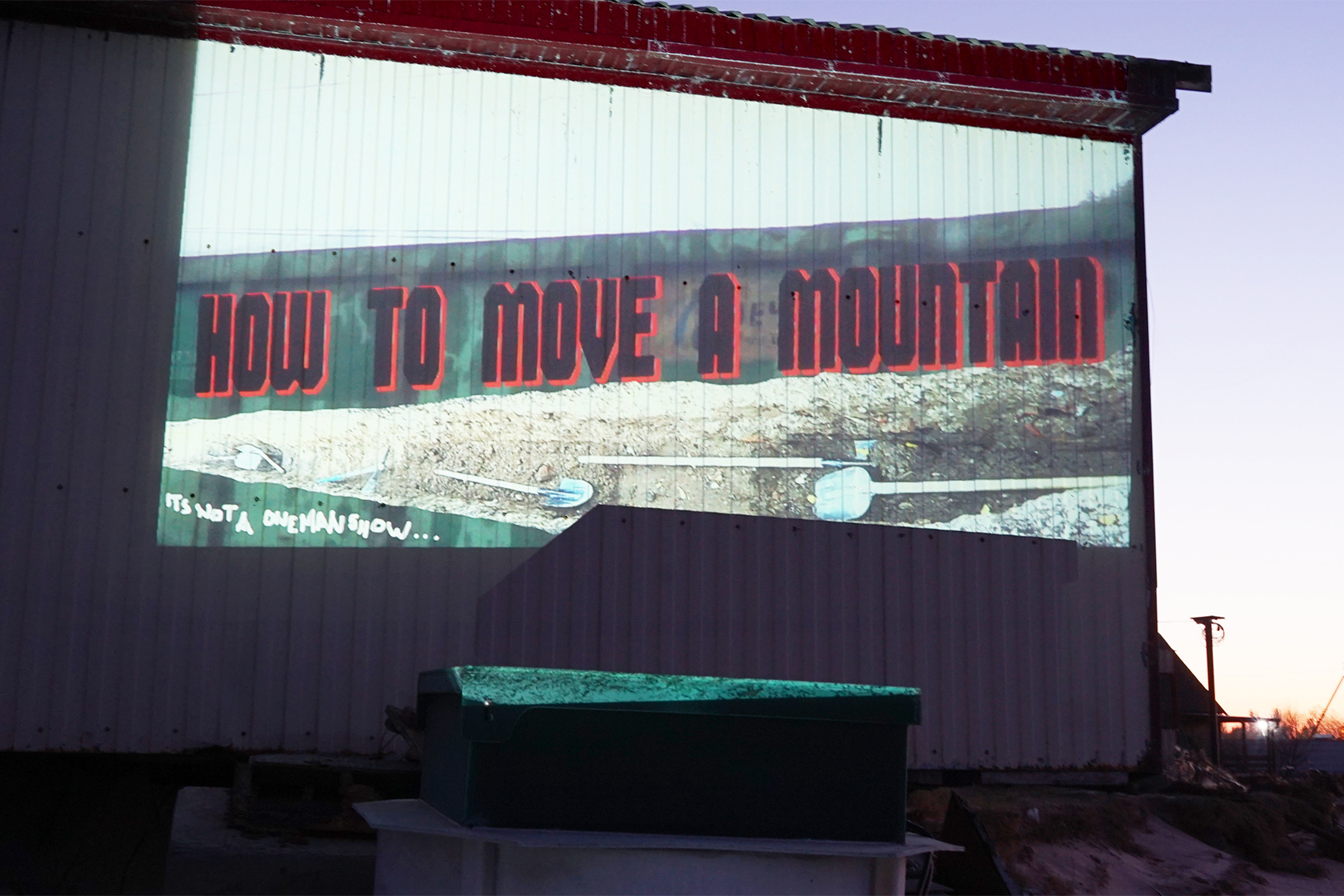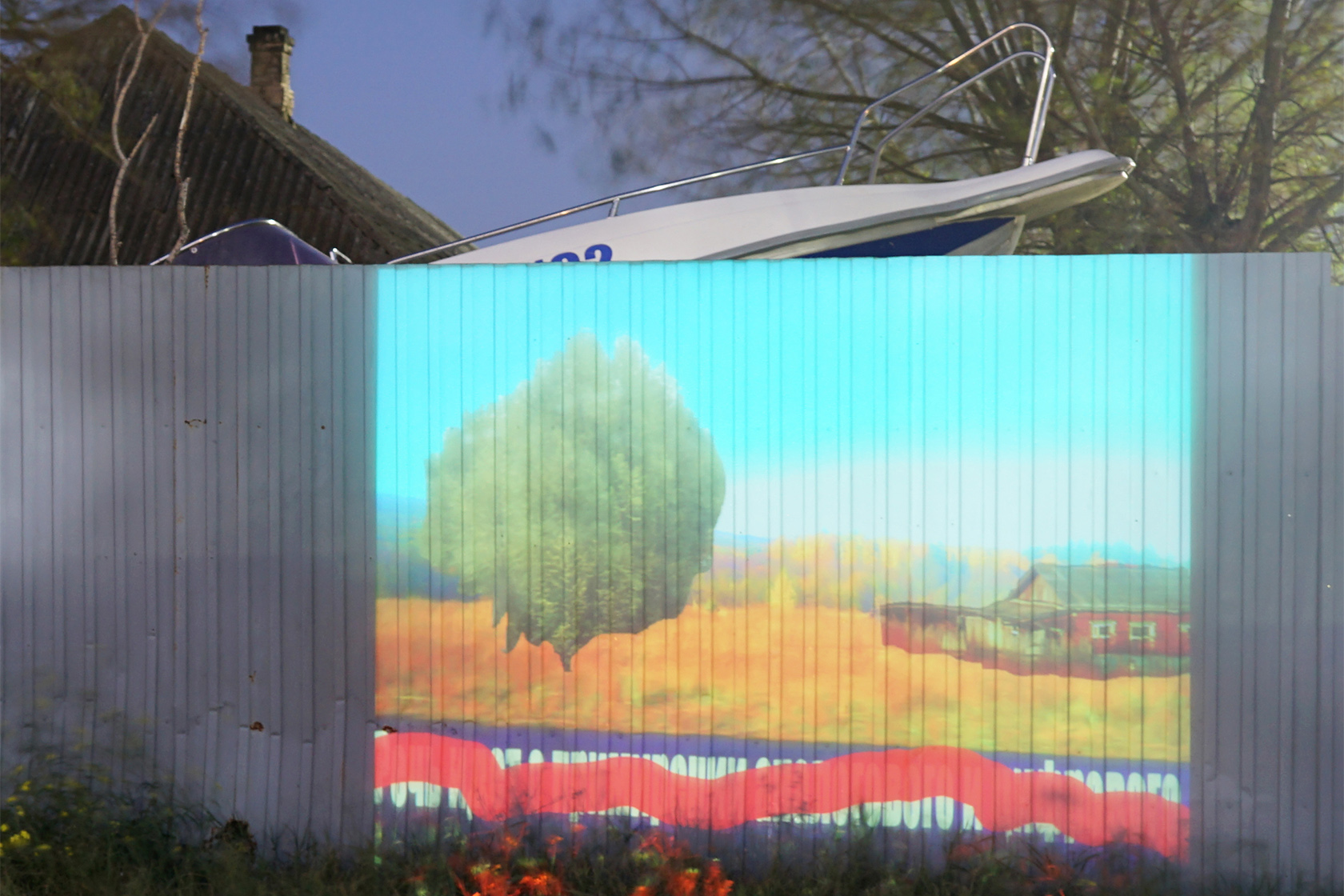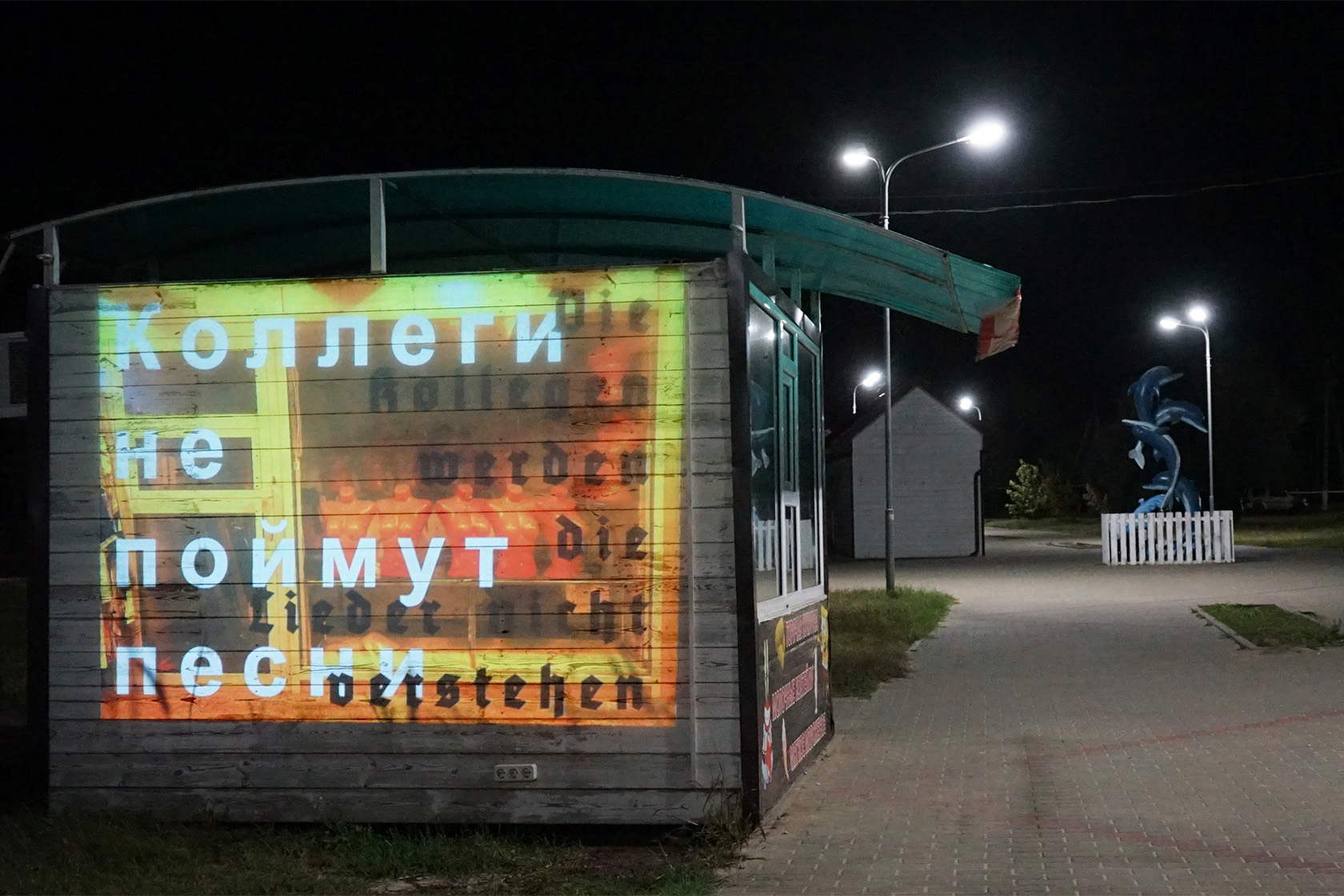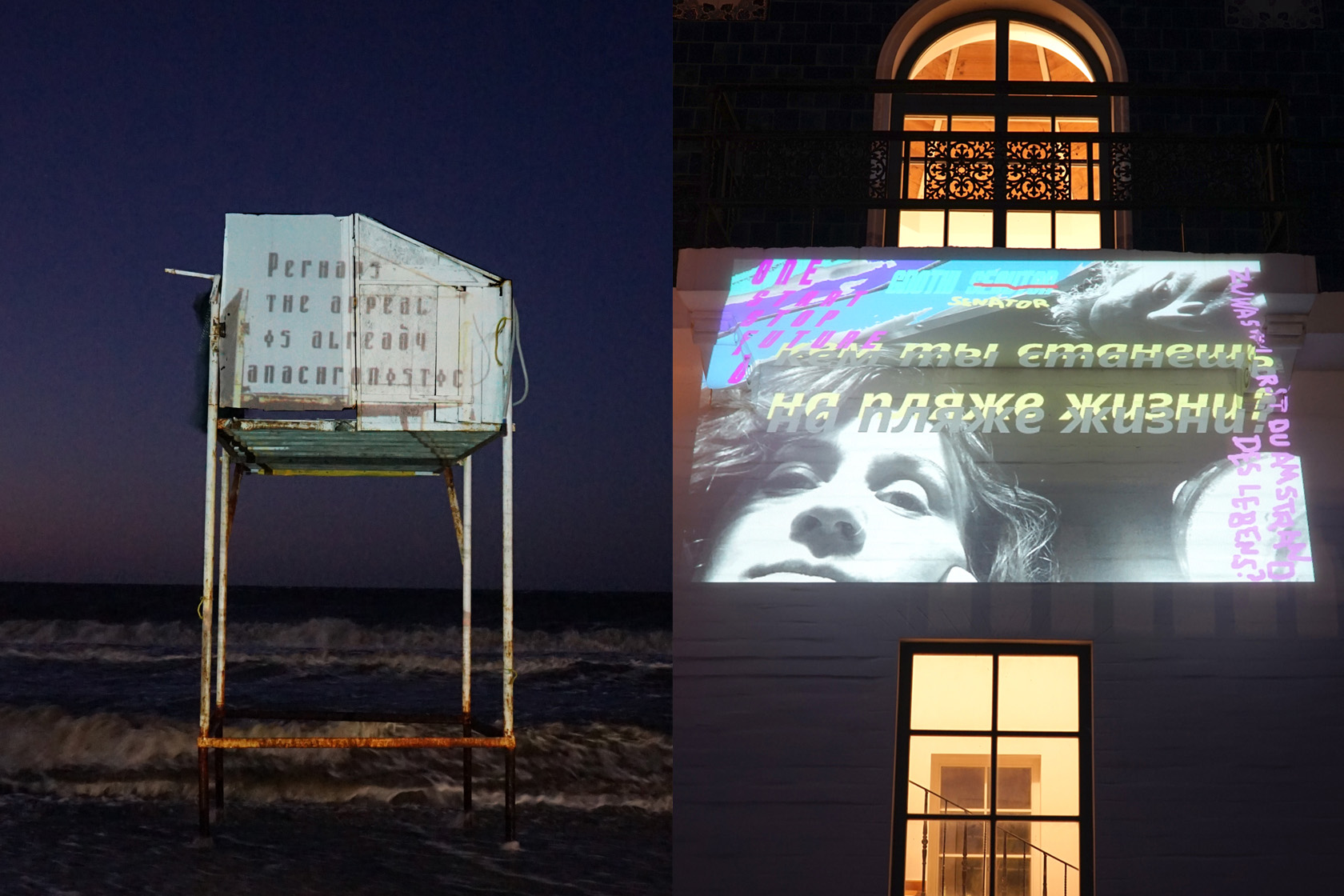Claudia Piepenbrock and André Sassenroth
Artist duo from Bremen – Claudia Piepenbrock and André Sassenroth – paid a visit to the Golubitskoe Art Foundation
At Golubitskoe, Claudia and André continued to work on their project titled 'Still Life Train / Ein Stillleben' that explores the effects of translocality and 'moving still life' in the language and material structures of everyday life. Having studied historical publications, travel reports and samizdat by Soviet artists, Claudia and André decided to recreate their itinerary and compare their journey and perception of the places today with the experiences of the past.
The artists started their journey in Germany and proceeded to travel across Russia all the way to Sakhalin to the Sea of Okhotsk to Yakutia and back. Claudia and André put together an archive of various documents: from photographs, sound pieces, videos, field notes to interviews made during the trip, using which the artists will compare their own experiences with those of Soviet travellers as well as explore the perception of landscape through constant movement.
"We are embarking on this journey in order to be on various trains and ferries for a limited period of time. These vehicles are bodies in which we let our own bodies move. It is a total of approx. 600 hours that we are moved in or on them. We will spend the longest connected piece / the longest time of it on the Trans-Siberian Railway. It offers us the opportunity to stay still for about 10,000 km and still be in motion. We call this phenomenon "moving still life",' explain Claudia and André.
At Golubitskoe, Claudia and André continued to work on their project titled 'Still Life Train / Ein Stillleben' that explores the effects of translocality and 'moving still life' in the language and material structures of everyday life. Having studied historical publications, travel reports and samizdat by Soviet artists, Claudia and André decided to recreate their itinerary and compare their journey and perception of the places today with the experiences of the past.
The artists started their journey in Germany and proceeded to travel across Russia all the way to Sakhalin to the Sea of Okhotsk to Yakutia and back. Claudia and André put together an archive of various documents: from photographs, sound pieces, videos, field notes to interviews made during the trip, using which the artists will compare their own experiences with those of Soviet travellers as well as explore the perception of landscape through constant movement.
"We are embarking on this journey in order to be on various trains and ferries for a limited period of time. These vehicles are bodies in which we let our own bodies move. It is a total of approx. 600 hours that we are moved in or on them. We will spend the longest connected piece / the longest time of it on the Trans-Siberian Railway. It offers us the opportunity to stay still for about 10,000 km and still be in motion. We call this phenomenon "moving still life",' explain Claudia and André.
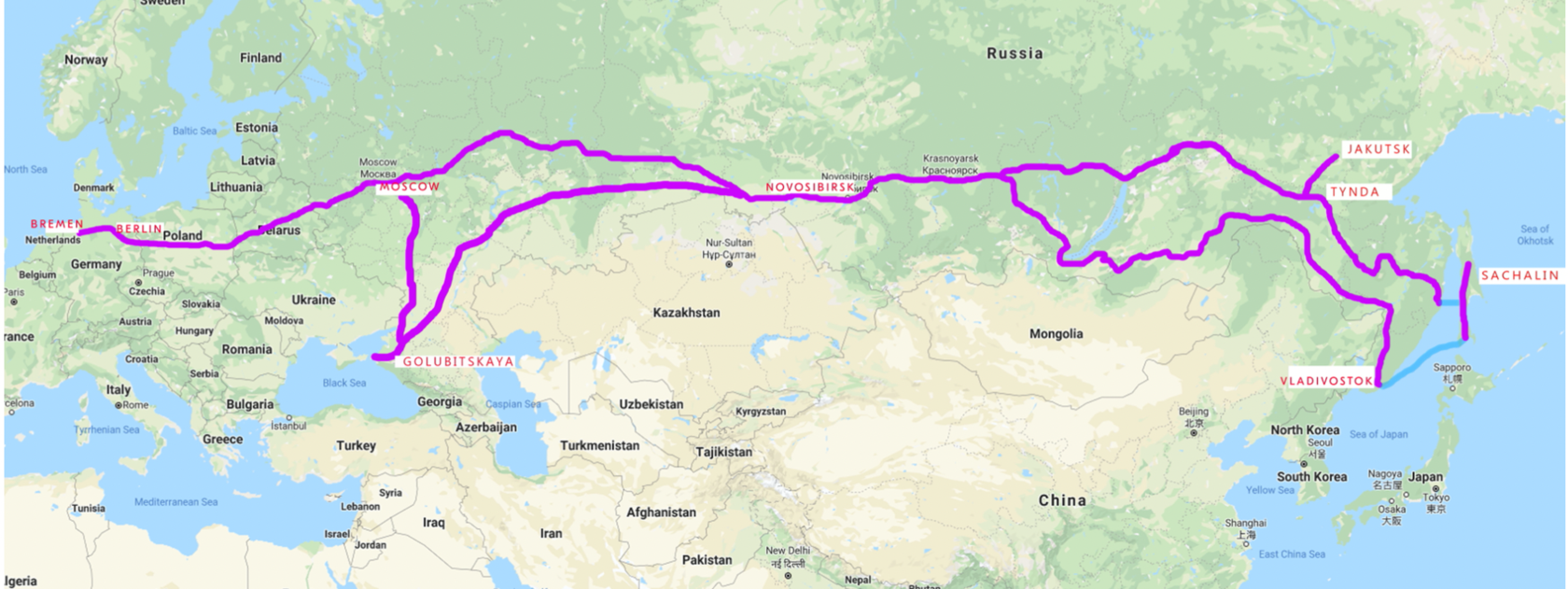
On their way back, the artists paid a visit to the Golubitskoe Art Foundation. And, just as they did during other stops on their journey, they projected images on the facades of buildings in the village, including the Foundation's headquarters.
'Visiting this region, even though it happened during the low season, was very inspiring thanks to the ghostly atmosphere of some places, which fit perfectly into our interventions in public spaces. The temporality of the "remains" in parks of culture and recreation matches the themes of emptiness and simultaneity, which are significant in our line of study. We couldn't be more grateful for this experience.'
Following their return to Germany, Claudia and André plan to present the outcomes of their project using a moving tram as an art venue, which visitors will be able to get on and off in order to fully experience the effect of translocality. Subsequently, the artists will present a publication detailing the events that took place as part of the project.
'Visiting this region, even though it happened during the low season, was very inspiring thanks to the ghostly atmosphere of some places, which fit perfectly into our interventions in public spaces. The temporality of the "remains" in parks of culture and recreation matches the themes of emptiness and simultaneity, which are significant in our line of study. We couldn't be more grateful for this experience.'
Following their return to Germany, Claudia and André plan to present the outcomes of their project using a moving tram as an art venue, which visitors will be able to get on and off in order to fully experience the effect of translocality. Subsequently, the artists will present a publication detailing the events that took place as part of the project.
Other participants

